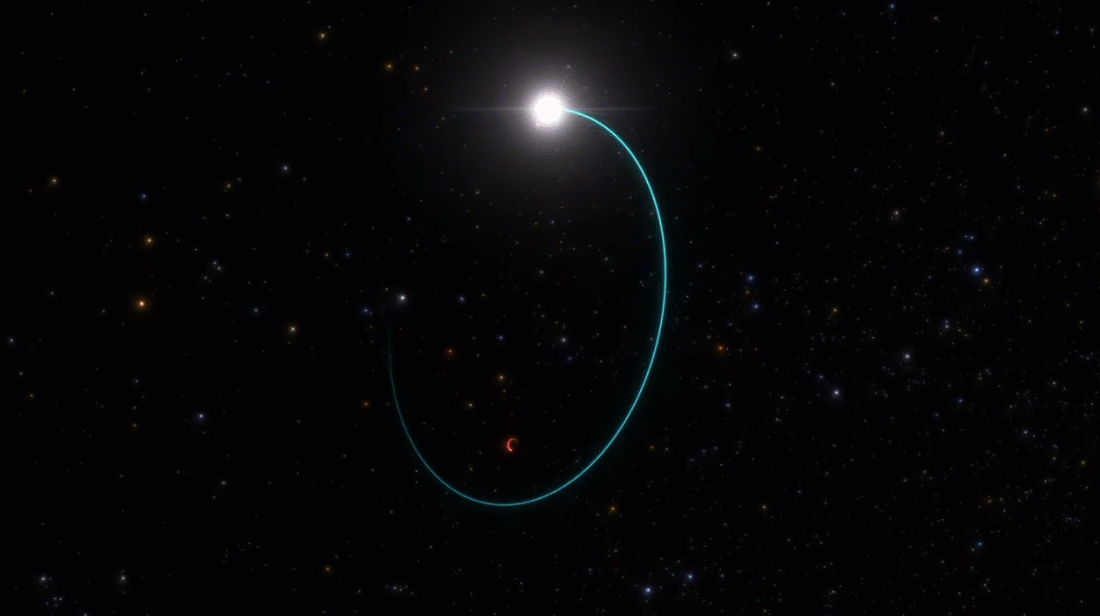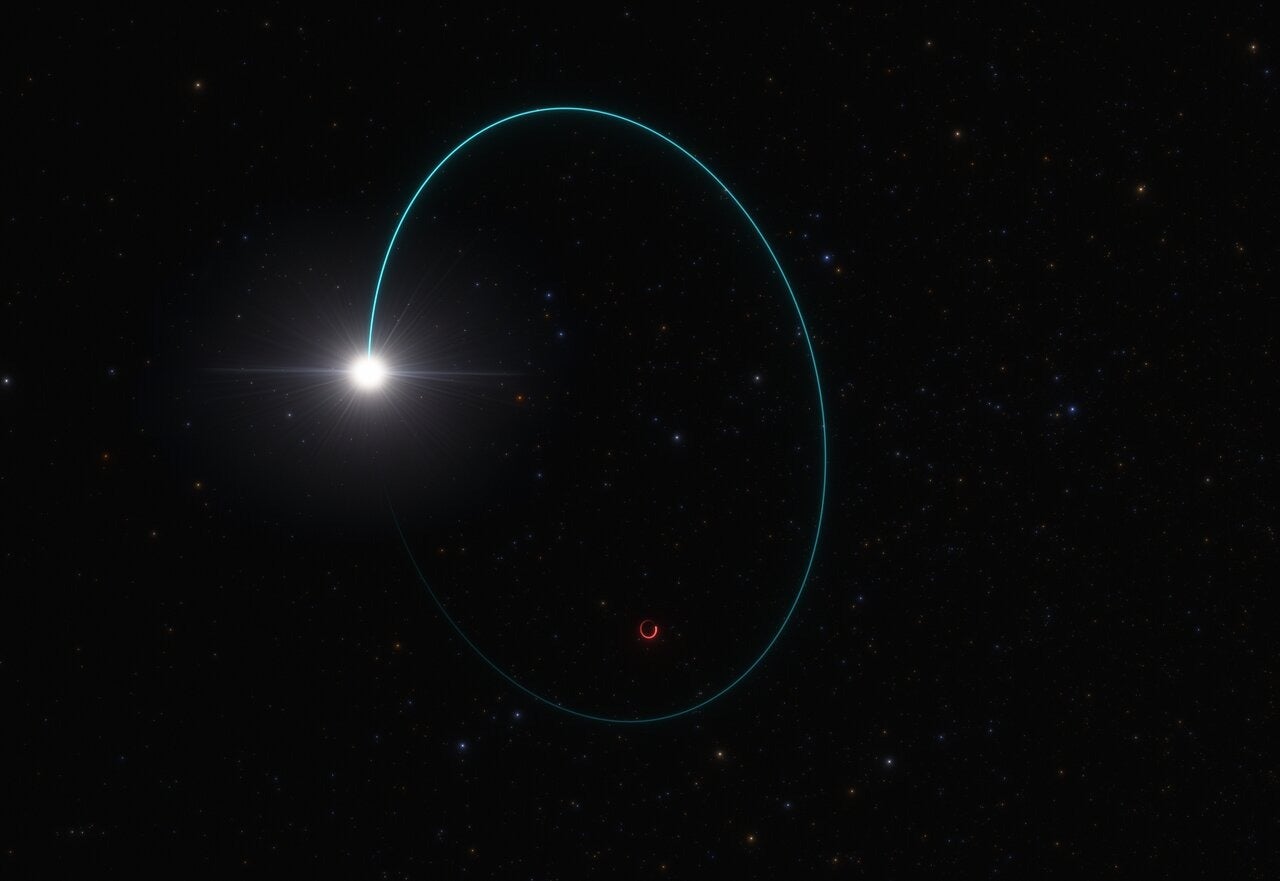
Pasquale Panuzzo of the French National Center for Scientific Research (CNRS) was among a team of astronomers routinely processing data from Gaia, the European star-mapping observatory, when a peculiar but recurrent wobble of an old, otherwise unremarkable giant star caught his eye.
It appeared a consistent gravitational tug from a hitherto unknown companion was disrupting the star’s motion. Sure enough, follow-up observations from ground-based observatories confirmed the star was swaying thanks to a remarkably massive yet previously undetected black hole. Now known to weigh roughly 33 times our Sun, the cosmic behemoth is the heaviest stellar-mass black hole yet found in the Milky Way.
“It was really a great surprise to find it,” recalls Panuzzo, who is the lead author of a new study describing the discovery. “When [the team] saw it, it was a long series of ‘wows.’”
Gaia BH3 is the second closest known black hole to Earth
The newfound black hole, an intense, light-trapping abyss which has been named Gaia BH3, lurks just 1,926 light-years from Earth in the Aquila constellation. (That makes it the second closest black hole to Earth after Gaia BH1, which resides at 1,500 light-years away and is three times lighter than Gaia BH3.) The so-called “sleeping giant” — so named because unlike its ilk, the dormant black hole doesn’t appear to be shredding its companion star to pieces — birthed out of the imminent collapse of a once-massive star. It is the first direct link between a black hole and a progenitor star that was deprived of metals heavier than hydrogen and helium, according to the new study published in April in the journal Astronomy and Astrophysics.
The discovery confirms a leading theory of stellar evolution that posits high-mass black holes are remnants of stars that are low on metals. Such metal-poor stars have damped mass-eroding winds compared to their metal-rich counterparts, and thus have more material available to form heavier black holes. Astronomers normally time announcements of science discoveries at the same time as data release, in this case no sooner than early 2026, but “you cannot hide this kind of discovery from the community for two years,” says Panuzzo. “It is a unique case of publication based on the preliminary data because the data is exceptional and also something that’s very interesting for the community.”
The star near Gaia BH3
The star being rocked by Gaia BH3 is a “completely uneventful, metal-poor, old star” that likely formed in the first billion years after the Big Bang, says Elisabetta Caffau of CNRS, who analyzed the star’s spectrum and is a co-author of the new paper. The chemical composition of the companion star, as revealed by its spectra, shows it is dominant in hydrogen and helium. It also has a sprinkling of other elements including calcium, carbonium, and europium, all of whose abundances are hundreds of times lower than those in our Sun. Since stars in a binary system are usually born in the same clusters, the black hole’s progenitor star would also have been poor in metals, says Caffau.

Surprisingly, the companion star does not appear to be “polluted” by the collapse of the black hole’s massive progenitor as would be expected when one star in a binary system dies, says Caffau. “We don’t see anything.”
She predicts the companion star, which has already evolved to its penultimate puffy nature, will eventually shed its outer layers and leave behind a tiny white dwarf, following the same fate that awaits our sun about 6 billion years from now after it runs out of fuel.
Panuzzo says there are other dormant black holes his team spotted while processing the latest Gaia data, although “none of those we saw are as spectacular as this one,” he says. A survey by Gaia of faint stars in our galaxy they are currently reviewing “will for sure have surprises.”









